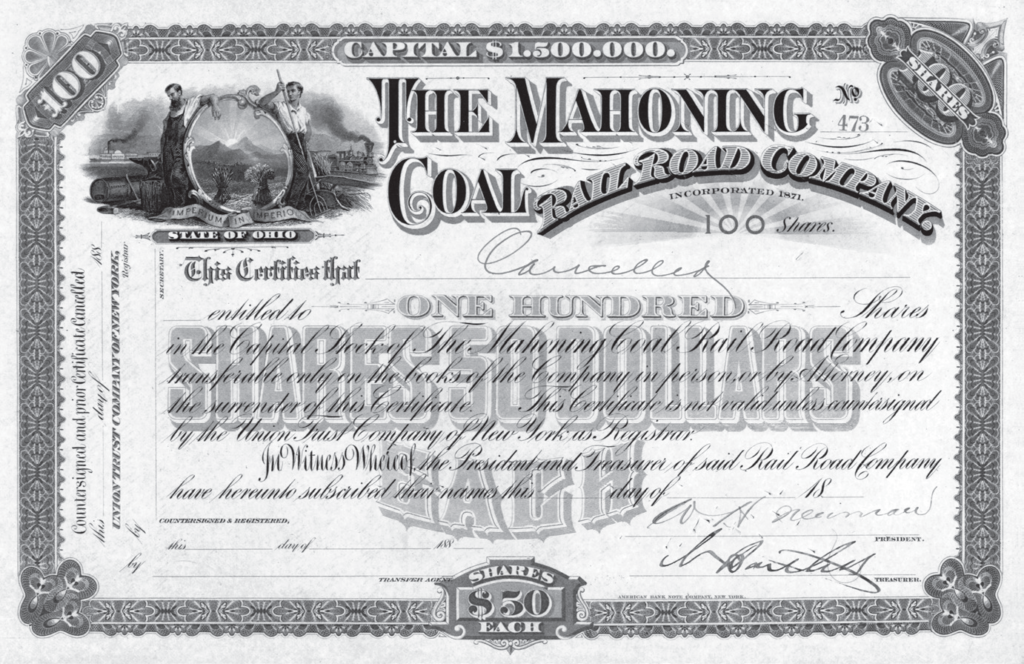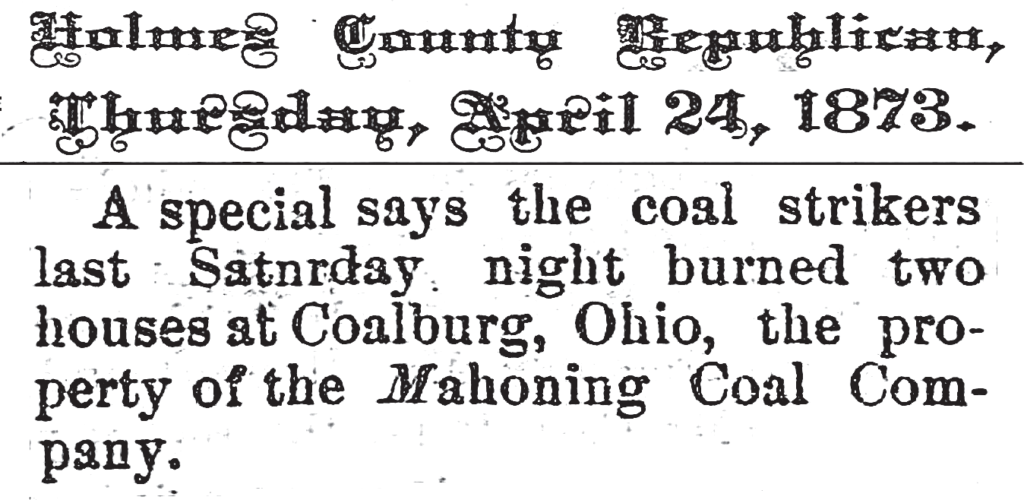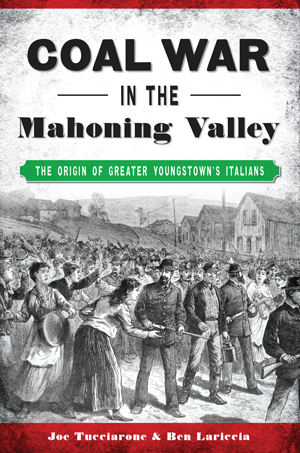
We’ve been here before. In a previous look at the dangerous, often violent early years of American metal industries, Crime Capsule explored the turbulent development of the steel industry in western Pennsylvania. Today, we’re moving just across the state line, to the famous Mahoning Valley of Ohio, where many of the mines that produced raw material for those steel mills were housed.
In their book Coal War in the Mahoning Valley: The Origin of Greater Youngstown’s Italians, authors Joe Tucciarone and Ben Lariccia chart the growth of digging, extracting, and processing in one of the most mineral-rich areas of the country. As in Perelman’s account of Pennsylvania, Tucciarone and Lariccia detail the many conflicts that characterized mine operations, not just between owners, management, and workers, but between workers themselves as well.

In a sad chapter in American history, Tucciarone and Lariccia tell the story of Giovanni Chiesa, who was the first Italian murdered by a lynch mob in the United States. In the early 1870s, falling coal prices had led mine owners to slash wages for their workers, leading to full-scale strikes and walkouts. In the decades before federal labor laws and union protection, oftentimes the only recourse available to the rank-and-file was simply to refuse to work, imperiling profits for the brass, and the strike of 1873 was no different.

Except that in this case, mine ownership played a deadly card: ignoring the demands of their local workers, they began to ship in immigrant labor to do the job instead. These strikebreakers were mainly Italians, followed by Swedish and German workers who were content to work at the new wage scale. Tucciarone and Lariccia:
“To the embittered strikers of Church Hill, the coming of the immigrants was the death knell of their cause. Unable to settle their dispute with the coal company and blindsided by the arrival of so many replacement workers, the miners turned their anger on the foreigners. Indeed, the presence of aliens in the coalfields ignited xenophobia among the workmen, who saw the newcomers overturning the established relation between miners and their workplace. It’s not difficult to see how the mining community at Church Hill would seize on ethnic and other differences between the miners and the foreigners, who were Catholic and non-English speaking. It wasn’t long before these resentments turned violent.”
Unsurprisingly these new arrivals usually kept to themselves, but one day in July 1873, Giovanni Chiesa had left his tenement in the miner’s camp to go draw water. Disgruntled Scottish and Welsh miners led by one William Trotter angrily confronted him; the argument turned violent, and Trotter was wounded, stabbed in the neck. Enraged, the displaced Anglos raised a crowd of 200 miners and surrounded Chiesa’s tenement. When the Italians refused to come out, the Anglos set fire to the building, intercepting the Italians one by one they fled the building and beating each one half to death.

Chiesa, Tucciarone and Lariccia note, was the primary target, and received the worst of it. Pistol-whipped, beaten, struck with bricks, Chiesa suffered for hours, barely able to crawl along the ground. When he begged for a drink of water, someone threw him in a mud puddle, saying he could drink all he wanted from there. He expired soon after, but even then, the indignity didn’t cease: according to one witness, Tucciarone and Lariccia record, little boys came along hitting the dead with sticks.
While there is little true good that came of this story—there rarely is, when mob rule or ‘mob justice’ is involved—thankfully, justice was served upon many of the perpetrators. Fifteen of the rioters were arrested, Trotter included, and several of the rioters were charged with first-degree murder and later imprisoned. As the authors note, it would take years before racial stereotypes against Italians in the greater Mahoning Valley would give way to tolerance and acceptance, but peace would eventually come. For that, we can be grateful—and we can light a candle for Chiesa as well.
Looking for more to read during quarantine? Check out our quaran-reads here. Finding us for the first time, and want to learn more about what we do? Visit our welcome page and sign up for the Crime Capsule email newsletter. See you behind bars!

Learn More
The struggles and successes of the industrious coal miners in Ohio’s Mahoning Valley. Year after year, local Welsh coal diggers supplied the ravenous and roaring ironworks in Mahoning Valley but the good times ended in the closing weeks of 1872. The demand for iron slackened, and with it, coal orders fell. Responding to plunging coal prices, mine owners cut wages, but rank-and-file miners would have none of it. On New Year’s Day, they went on strike. The bitter stalemate broke only when operators sidestepped local labor by employing African Americans from Virginia and Italian immigrants crowding the Eastern Seaboard. Violence followed. Yet this vicious strife opened the Mahoning Valley to permanent Italian settlement. Authors Ben Lariccia and Joe Tucciarone uncover this forgotten chapter in the region’s storied labor history.



